 |
 |
 |
| |
HBV Blippers and Rebounders under Treatment with Tenofovir in HIV/HBV Co-infection
|
| |
| |
Reported by Jules Levin
_CROI Montreal 209 Feb 8-12
Karine Lacombe*1,2,3, J Gozlan3, A Boyd1,2, P Bonnard1,2,3, J-M Molina3, P Miailhes4, C Lascoux-Combe3, F Zoulim4,5, J Pacanowski3, and P-M Girard1,2,3
1INSERM UMR-S707, Paris, France; 2UPMC, Paris VI, France; 3AP-HP, Paris, France; 4Hospices Civils de Lyon, France; and 5INSERM U271, Lyon, France
From Jules: Tenofovir is a widely used HIV therapy, particularly as part of FDC Truvada and Atripla, and is tolerable and convenient. In HIV and HBV tenofovir (TDF) has a high barrier for drug resistance. If HBV/HIV coinfected patients develop viral failure to TDF future HBV therapy will have to be selected and this raises concerns because ongoing HBV replication is associated with HBV disease progression and liver cancer. In addition, in SMART (CID, Tedaldi 2008) investigators concluded: "In summary, although antiretroviral therapy interruption has proven to be deleterious in the general HIV_1-infected population, it is particularly unsafe for viral hepatitis-coinfected persons because of an elevated risk of non-opportunistic disease death. Antiretroviral therapy interruption in the coinfected participants resulted in increased mortality from a wide variety of causes with no clear predominance."
In the oral talk of 165 eligible patients for this analysis 148 were "controlled" with <2000IU/mL. There were 4 blippers (2.6%), 2 rebounders (1.3%), and 0 nonresponders. So therapy was successful in suppressing HBV DNA, for 11 patients they did not have adequate TDF drug concentrations and were considered non-compliant. These 6 patients were further analyzed. Median time to blipping in the 4 blippers was 22 months (19.5-35.2), blipping was sparse and alone did not appear to lead to HBV evolution (see slide below). 3 blippers developed the L217R mutation, considered a polymerphism, and the 4th patient developed the R274W mutation, so far not seen to be associated with resistance to a nucleoside or nucleotide. In the 2 viral rebounders median time to rebound was 22.8 months (19.5-24.6). Both patients had the L217R mutation when starting TDF therapy and at time of rebound, both were genotype A. Both had been exposed to 3TC but only one was concomittently treated with 3TC during followup. One patient was resistant to lamivudine. In the patient with no other mutatins at baseline before TDF therapy other than the L217R, the S219A mutation emerged at time of rebound. So far this mutation has not been described as being associated with nucleoside or nucleotide resistance.
The authors concluded: viral suppression of HBV DNA in HBV/HIV coinfected patients treated with TDF is rapid (median time to viral control-8.1 months) and sustained (median followu=31 months). More than 98% of patients had a viral load under 2000UI/mL at end of followup. 4 blippers (2.6%) and 2 (1.3% rebounderds were identified. The authors said 2 main results should be understood. The L217R mutation which was found in 3 of 4 blippers which was considered to be a polymorphism was recently associated with adefovir failure in 2 coinfected patients and suboptimal viral response in 31 mono and coinfected patients. However these retrospective data was not confirmed at the recent study which found no reduction to sensitivity to adefovir in monoinfected patients using a phenotypic assay, therefore its role in blip occurrence must be further analyzed in other cohorts and we are currently conducting phenotyping. Second, neither R274W nor S219A have been described previously as being associated with
a decreased sensitivity to TDF among HVB infected patients. No A194T was found in these patients. Phenotyping is ongoing and is strongly needed before concluding any association between these mutations and TDF failure.)
ABSTRACT
Background: Frequency and reasons for failure to control hepatitis B virus (HBV) replication during treatment with tenofovir (TDF) are not well characterized in HIV/HBV-co-infected patients.
Methods: HIV/HBV-co-infected patients within a large, prospective cohort study (French HIV/HBV Cohort) were included in the present analysis if they had received TDF for at least 6 months. Nonresponders were defined as patients with HBV DNA viral load persistently above 2000 IU/mL, blippers were patients displaying viral load rebounds over 2000 IU/mL with HBV viral load <2000 IU/mL, and rebounders were patients who once displayed a HBV viral load <2000 IU/mL followed by an HBV viral load consistently above 2000 IU/mL. TDF concentrations were measured in all patients who experienced viral failure and HBV DNA was sequenced for genotyping and HBV DNA polymerase mutations.
Results: We included 168 patients who had at baseline: median CD4 cells, 370/mm3 (IQR 262 to 536), median HIV RNA 1.85 log10 copies/mL (IQR 1.70 to 4.07), and median HBV DNA 3.22 log10 UI/mL (IQR 2.16 to 6.58). We treated them with TDF for a median duration of 31.6 months (IQR 21.4 to 39.0). Transaminases significantly decreased over time-mean alanine aminotransferase (ALT) (SD), 79 (96) to 40 (30) UI/mL, p = 0.01; mean aspartate aminotransferase (AST) (SD), 62 (30) to 33 (16), p = 0.0008. Median time to HBV <2000 UI/mL was 9.1 months, 95%CI (7.3 to 12.8). Of the total, 150 patients (89.3%) were <2000 UI/mL at the end follow-up, while 18 patients experienced virological failure. From these 18 patients, only 6 had a correct TDF serum concentration.
Among these patients, 0 were nonresponders, 4 were blippers, and 2 were rebounders after a median TDF exposure duration of 22.8 months (range 19.7 to 25.6). Sequencing was obtained for 5 patients with the following HBV genotypes: A (n = 2), G (n = 1), and A/G mixed pattern (n = 2). No specific Pol mutation was found to be associated with HBV failure, but the L217R mutation, considered belonging to HBV genotype A2 polymorphism, was found in 4 out of 5 patients.
Conclusions: TDF exerts a long lasting antiviral effect in HIV/HBV-co-infected patients and most of the observed "failures" were likely as a result of poor adherence. No resistance mutation, except L217R signaling polymorphism, was found in 4 patients experiencing confirmed virological failure. The role of this mutation in generating blips and rebounds in HBV DNA replication among HIV/HBV-co-infected patients needs to be further investigated.
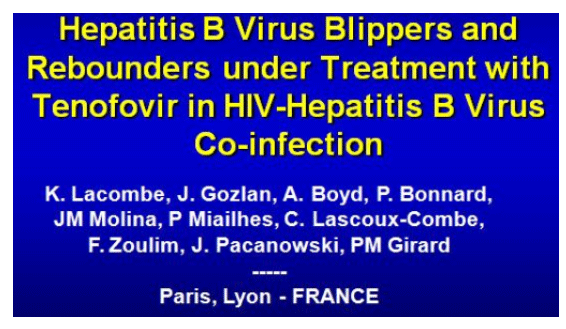
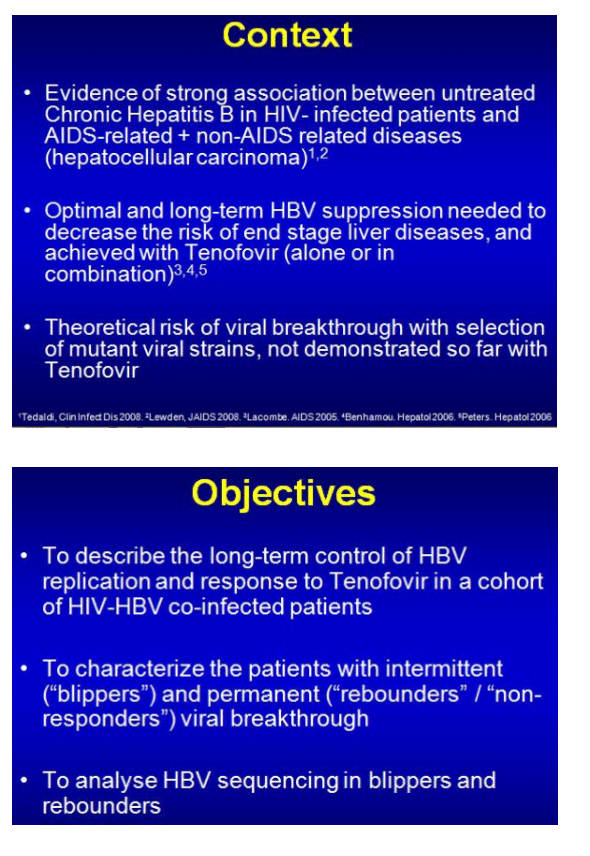
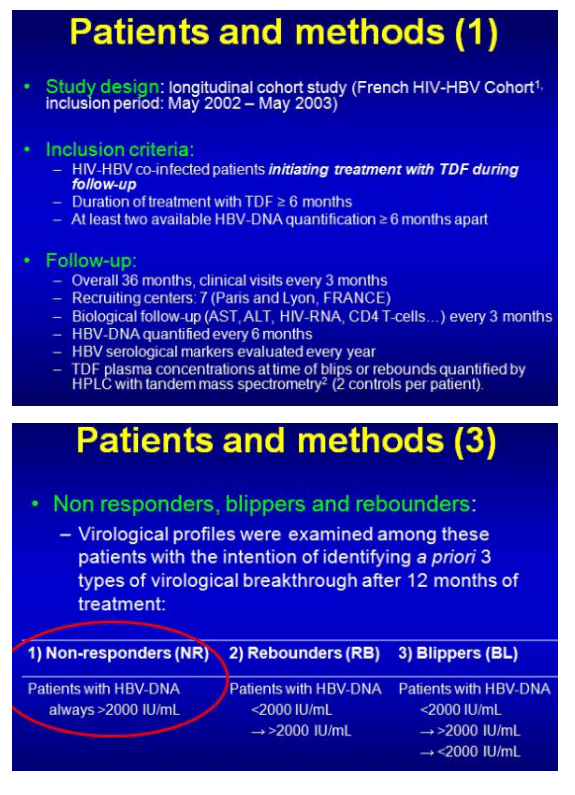
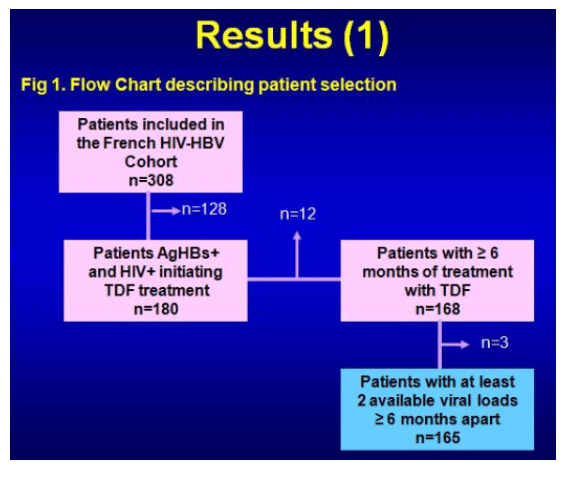
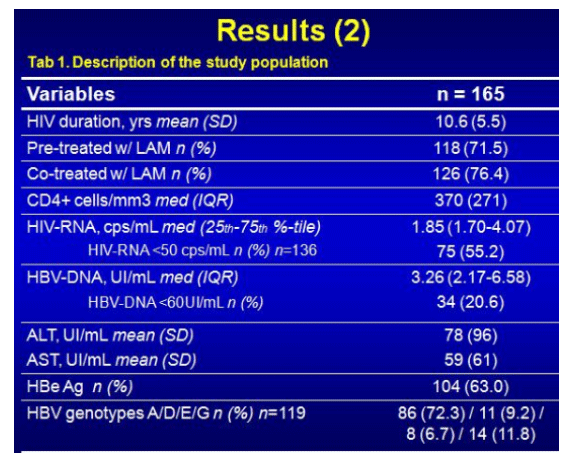
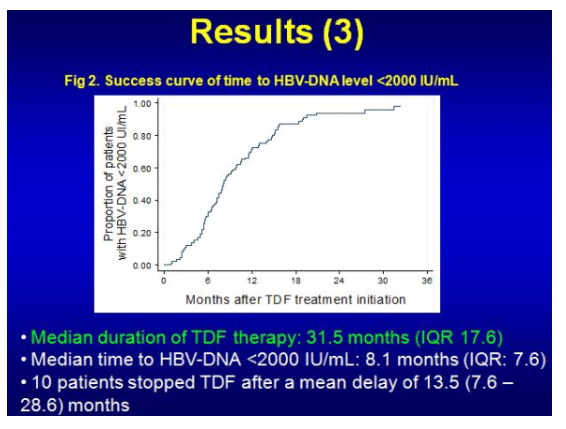
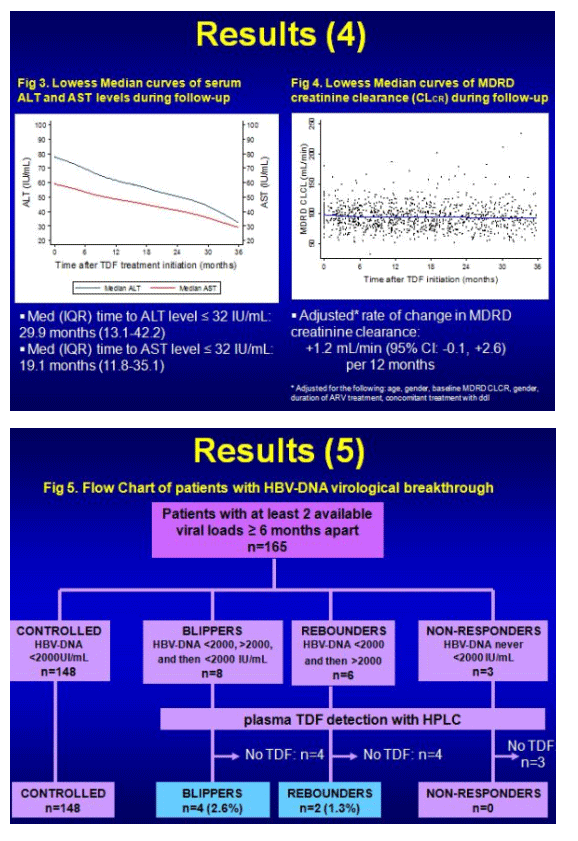
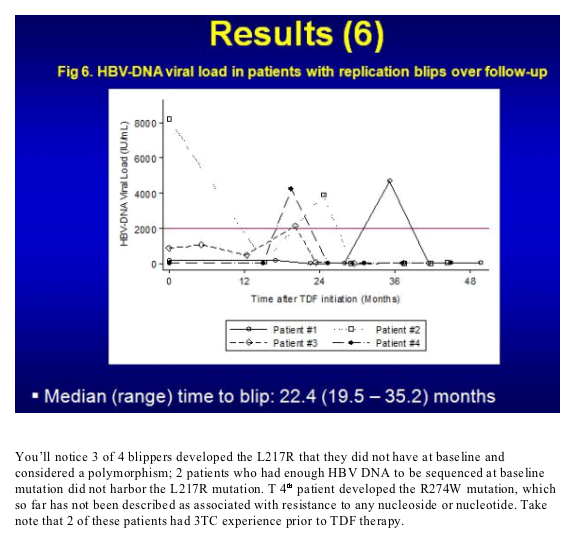
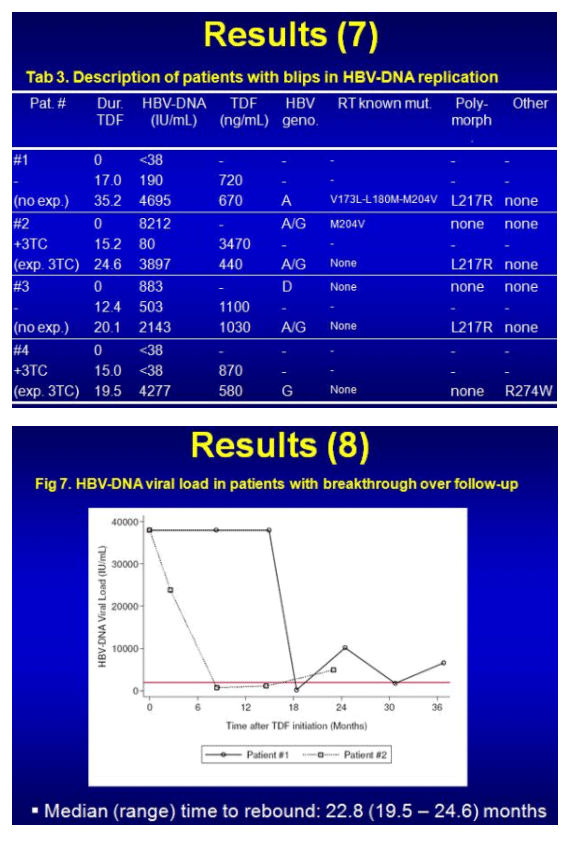
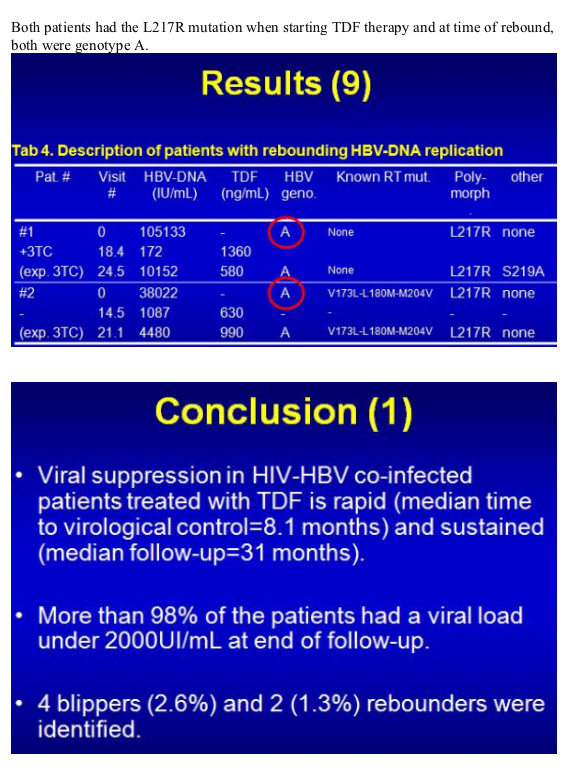
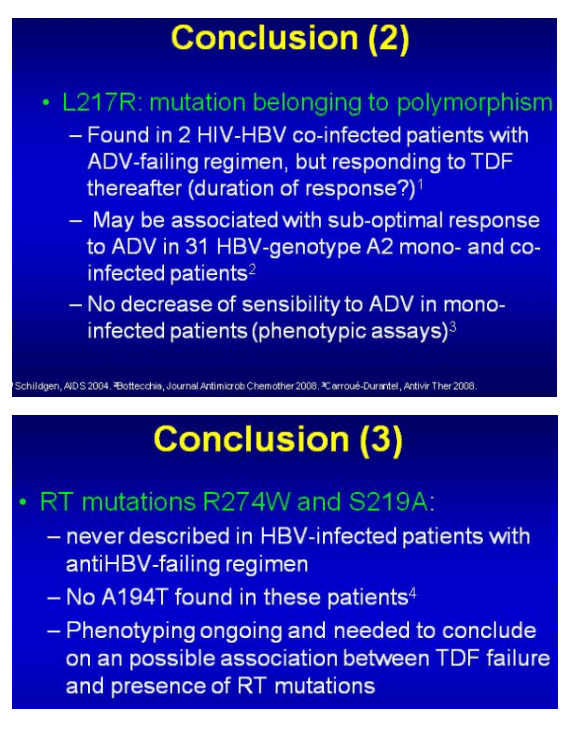
|
| |
|
 |
 |
|
|